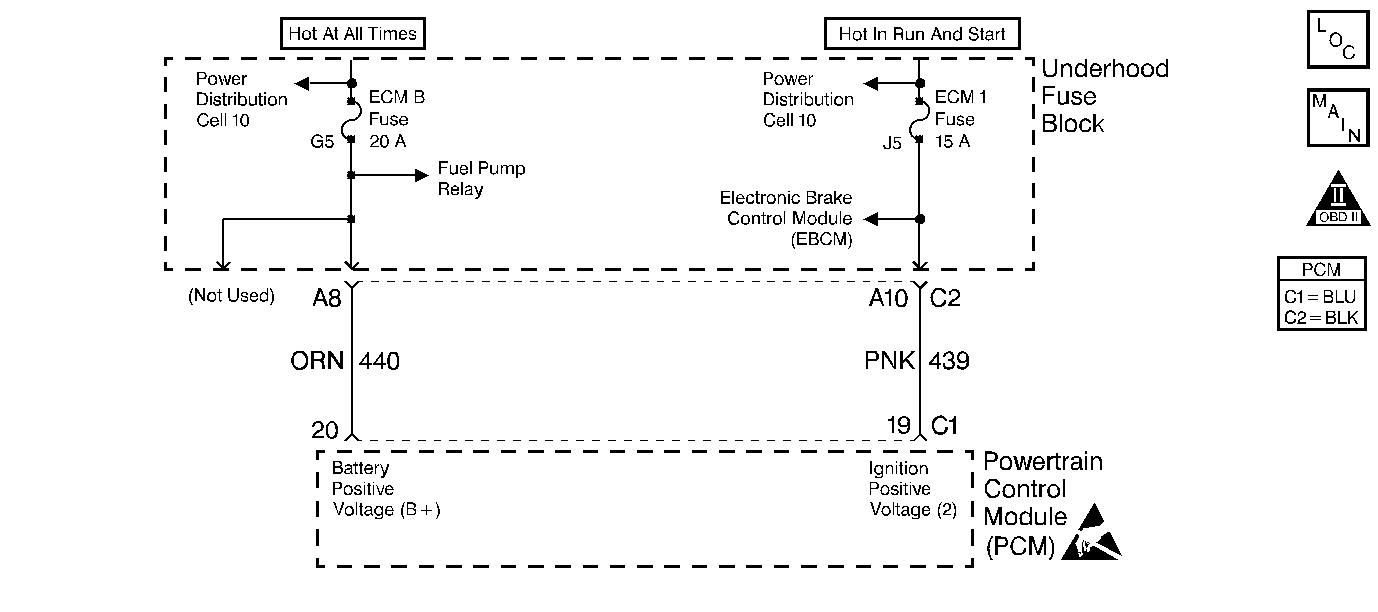
Circuit Description
The powertrain control module (PCM) monitors the system voltage on the ignition feed terminals to the PCM. A system voltage DTC sets whenever the voltage is below a calibrated value.
Conditions for Running the DTC
The engine speed is more than 1,300 RPM.
Conditions For Setting the DTC
The ignition voltage is less than 10 volts for 240 seconds.
Action Taken When the DTC Sets
| • | The PCM records the operating conditions at the time the diagnostic fails. The Failure Records buffers stores this information. |
| • | A history DTC is stored. |
Conditions for Clearing the DTC
| • | A history DTC clears after 40 consecutive warm up cycles without a fault. |
| • | Use a scan tool to clear the DTCs. |
Diagnostic Aids
If the DTC sets when an accessory is operated, inspect for a poor connection or an excessive current draw.
Test Description
The numbers below refers to the step numbers on the diagnostic table:
-
This step tests if the generator is malfunctioning under load conditions.
-
The PCM Controlled Generator Diagnosis will further test the PCMs control of the generator.
-
This step tests the ignition positive voltage circuit #2 for any excessive resistance. An open circuit will cause a no start condition.
-
The replacement PCM must be programmed and the Crankshaft Position System Variation Learn procedure must be performed.
Step | Action | Values | Yes | No | ||||||
|---|---|---|---|---|---|---|---|---|---|---|
1 | Did you perform the Powertrain On-Board Diagnostic (OBD) System Check? | -- | ||||||||
Does the ignition voltage read less than the specified value? | 1,400 RPM 10 V | Go to Diagnostic Aids | ||||||||
Does the battery voltage measure more than the specified value? | 1,400 RPM 12 V | Go to Powertrain Control Module Controlled Generator Diagnosis | ||||||||
Does the ignition voltage measure more than the specified value? | 10 V | |||||||||
5 |
Did you find and correct the condition? | -- | ||||||||
6 |
Did you complete the repair? | -- | -- | |||||||
|
Important:: The replacement PCM must be programmed.
Did you complete the replacement? | -- | -- | ||||||||
8 |
Does the DTC reset? | -- | System OK |
